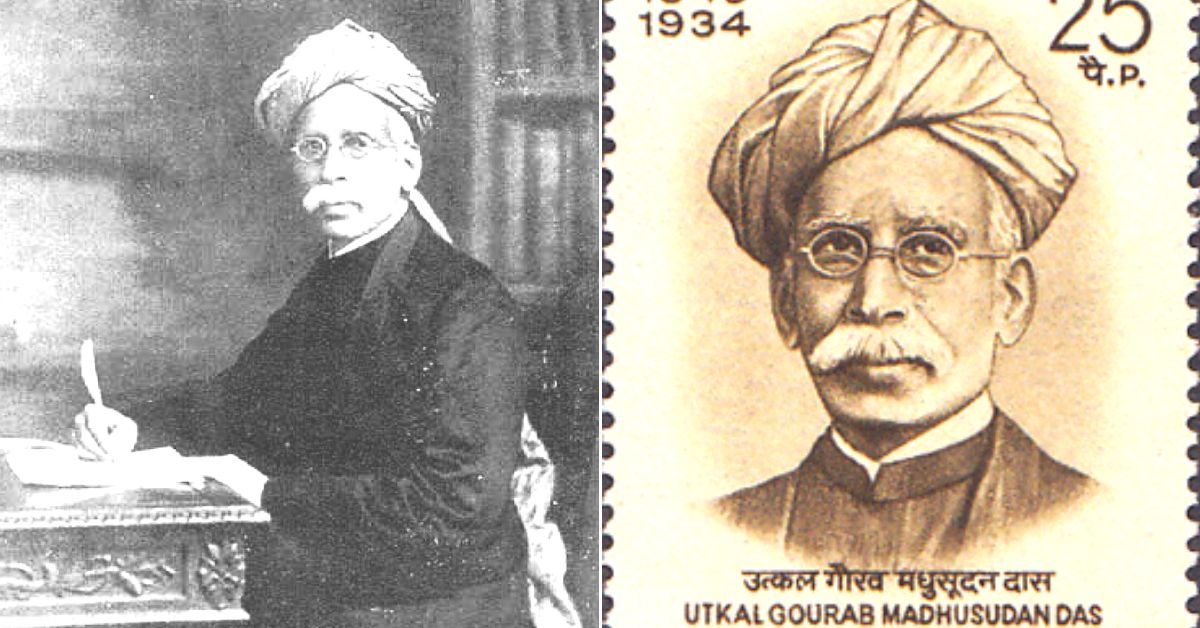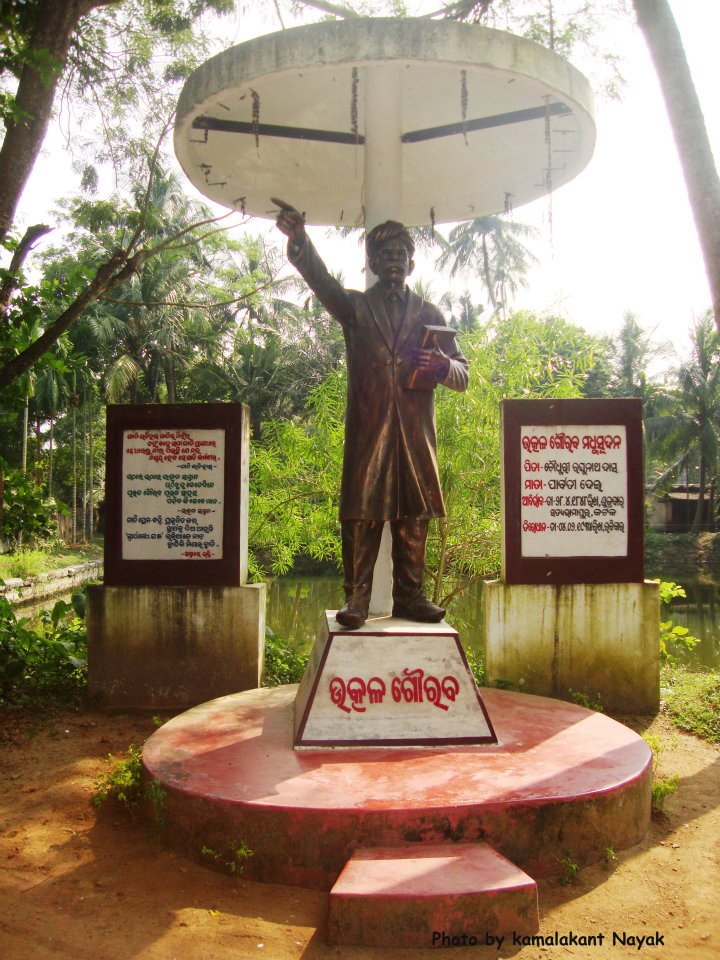First Odia to Get a Law Degree, This ‘Grand Old Man’ Helped Give Birth to Odisha
Historians argue that in fighting for a united Odisha, Madhusudan Das showed great foresight in demanding a state/province carved along linguistic lines given what the future held post-Independence.

Madhusudan Das, a lawyer and social reformer, did trailblazing work in the late 19th and early 20th century, laying the foundations for the present state of Odisha. Sadly, he remains a largely forgotten figure among the pantheon of famous Indian historical figures. (Image above of Madhusudan Das, the legendary Odia)
As present-day Odisha’s first graduate and advocate, he founded an organisation called the ‘Utkal Sammilani’ in 1903, through which he not only campaigned extensively for the creation of Orissa Province (present-day Odisha, India) but also gave a strong impetus to the Odia linguistic movement struggling under British repression.
This province eventually came into existence on 1 April 1936. Without the landmark contributions of ‘Kulabruddha’ (Grand Old Man) or ‘Madhu Babu’ as he was known, one could argue that modern Odisha may not have even existed today.
National leaders like MK Gandhi and BR Ambedkar held Das in high esteem. While the former called him a ‘great philanthropist’, the latter recognised his speech challenging the caste system and highlighting other Dalit issues when writing ‘The Untouchables and the PAX Britannica’.
Here’s the story of this remarkable historical figure.
Breaking the Shackles
According to scholar Dr Janmejay Choudhury’s April 2005 article in the state-run Odisha Review magazine, the movement for a unified Odisha began in earnest sometime in the latter half of the 19th century. This followed centuries of fragmentation for Odia-speaking communities under various kingdoms from the Mughals to the Marathas and eventually the British.
“The first proposal for the unification of the scattered [Odia] Oriya-speaking tracts under a single administration came from Raja Baikuntha Nath De of Baleswar and Bichitrananda Patnaik of Cuttack in 1875. They presented a memorandum to the [British Colonial] Government in this regard. In November 1888 Sir SC Bayley, the Lieutenant Governor of Bengal visited Orissa [Odisha]. He was presented with a Memorial by the ‘Utkal Sabha’ [a prominent political organisation] of Cuttack. Among other things, he was requested to give attention to the problem of uniting the Oriya-speaking territories of Madras, Central Provinces and Bengal in one administrative unit so that its all-around development would be possible,” writes Choudhury.
This proposal, however, was struck down by Sir SC Bayley, and the Odia language was subsequently banned from “official use” in the Odia-speaking district of Sambalpur in 1895 by the Chief Commissioner of the Central Provinces. This decision provoked widespread protests, but they would remain unsuccessful. Even though the linguistic movement had popular support among native speakers on the ground well into the 20th century, it needed a leader with the requisite intellectual and moral conviction that the British establishment could take seriously.
Enter Madhusudan Das, who was born on 28 April 1848 in Satyabhamapur, some 20 km from the city of Cuttack. Born into a Zamindar family, Das grew up with privilege as a member of the ‘Karana’ or writer caste, but soon “made a clean break with tradition and changed his religion” to Christianity in 1868, notes writer Hiranya Kumar Panigrahi in his book ‘Odisha of my Times’.
“It is only after freeing himself from the fetters of tradition that he came out with brilliant ideas to usher in a new era of Odisha. Many nationalist poets, literateurs and adherents of Satyabadi school of thought follow him,” Panigrahi argues. Founded by poet, patriot, freedom fighter and priest Gopabandhu Das, the Satyabadi school helped to mould national consciousness to a great extent amongst many Odia-speaking students of the region.
The ‘Utkal Sammilani’ first assembled at the tail end of 1903 and met every year in different regions where Odia was spoken till the creation of Odisha in 1936. Throughout, Das spearheaded the linguistic movement through this organisation. Besides this, Das also used his education (as the first Odia to obtain a Bachelor’s degree, Master’s degree and an LL.B degree) and extensive training as a lawyer to highlight other issues afflicting the region.

Other Contributions
As the first person of Odia descent to enter both the provincial Legislative Council (Bihar and Orissa Province) and Central Legislative Assembly, he used his platform to highlight the dire public health situation in rural Odisha. The region was plagued with diseases like cholera. Madhusudan Das slammed the colonial government for not putting in place the required budgetary provisions to address it.
Going further, he also used his platform as an elected leader to eradicate superstition in rural Odisha and promote modern medicine and the genuine advancements made in public health work related to dealing with epidemics.
Das was also a prolific writer and poet both in English and Odia. Some of his standout literary works include poems like “Utkal Santan”, “Jati Itihash” and “Jananira Ukti” with the spirit of the Odia linguistic movement and patriotism at the forefront of his writings.
However, one of his most interesting and possibly influential contributions was closer to home. While Cornelia Sorabji is considered by many as India’s first female lawyer, some historians in Odisha contest this claim. They believe that title goes to Das’ adopted daughter, Sudhanshubala Hazra, who broke all sorts of barriers to emerge as India’s first female lawyer in 1923.
In an April 2017 interaction with The New Indian Express, noted researcher Dr Basudev Das said that it was Das who fought Hazra’s case in the Patna High Court in 1921 so that she could practise law like her male counterparts. Das eventually won the case, and Hazra was officially designated a lawyer in 1923, which was almost a full year before Cornelia earned that honour.
His standout contribution, however, remains the creation of present-day Odisha carved along linguistic lines. To battle for this province (later state) along linguistic lines, he even parted ways with the Indian National Congress. Historians argue that he showed great foresight in demanding a state/province carved along linguistic lines given what the future held post-Independence. Sadly, he didn’t live long enough to see his dream come to fruition.
‘Utkal Gourab’ (Pride of Utkal) Madhusudan Das passed away in 1934 at the age of 85 and just two years before the official creation of Odisha.
Having said that, his ideas and contributions towards strengthening an Odia identity and carving out an administrative unit for the Odia speaking people of India live on today.
Source:
‘Utkal Sammilani and Unification of Scattered Oriya-Speaking Tracts’ by Dr. Janmejay Choudhury; Published in April 2005 courtesy Orissa Review
‘Contribution of Satyabadi School to National Movement’ by Dr. Janmejay Choudhury; Published in January 2004 courtesy Orissa Review
‘Sudhanshubala first female lawyer, not Cornelia: Researchers’ by Ashis Senapati; Published on 17 November 2017 courtesy The New Indian Express
‘Madhusudan Das — the lawyer who unified Odisha and reformed Indian judiciary’ by Raghav Bikhchandani; Published on 28 April 2022 courtesy The Print
‘Odisha of my Times’ by Hiranya Kumar Panigrahi (translated by Krishna Chandra Panigrahi); Published on 7 May 2021
(Edited by Vinayak Hegde)
Like this story? Or have something to share? Write to us: [email protected], or connect with us on Facebook and Twitter.
If you found our stories insightful, informative, or even just enjoyable, we invite you to consider making a voluntary payment to support the work we do at The Better India. Your contribution helps us continue producing quality content that educates, inspires, and drives positive change.
Choose one of the payment options below for your contribution-
By paying for the stories you value, you directly contribute to sustaining our efforts focused on making a difference in the world. Together, let’s ensure that impactful stories continue to be told and shared, enriching lives and communities alike.
Thank you for your support. Here are some frequently asked questions you might find helpful to know why you are contributing?


This story made me
-
97
-
121
-
89
-
167











